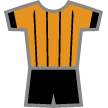Betting Online At Mr. Green
 Live Now
Live Now.png) ChampionsLeague
ChampionsLeague EuropaLeague
EuropaLeague.png) ConferenceLeague
ConferenceLeague.png) PremierLeague
PremierLeague Football
Football Tennis
Tennis.png) eSoccer
eSoccer Table Tennis
Table Tennis HorseRacing
HorseRacing eSport
eSport Handball
Handball MotorSports
MotorSports Cricket
Cricket Volleyball
Volleyball Boxing
Boxing Baseball
Baseball GreyhoundRacing
GreyhoundRacing MLB
MLB.png) Roulette
Roulette Blackjack
Blackjack LiveRoulette
LiveRoulette.png) MillionaireGenie
MillionaireGenie OddsBoost
OddsBoost Aviator
Aviator Bookof Dead
Bookof Dead Crazy Time
Crazy Time Gates OfOlympus
Gates OfOlympus UFC/MMA
UFC/MMA
Football
1
X
2
-333
+300
+1200
Tennis
1
2
FootballWasNow
Over 3 Goals In Each Of Tuesday's 5 UEFA Champions League Qualification MatchesTuesday Football Special #1
+900
+1200
Horse RacingWasNow
Naval Light (16:20 Goodwood) & Dubai Treasure (17:30 Goodwood) Both To WinGlorious Goodwood Double
+400
+500
FootballWasNow
Holger Rune & Lorenzo Musetti Both To Win 2-0ATP Toronto Special #2
+250
+300
TennisWasNow
Leylah Fernandez & Linda Noskova Both To Win 2-0WTA Montreal Special #1
+350
+450
FootballWasNow
Red Star Belgrade & Dynamo Kiev Both To Win & All 4 Teams To ScoreTuesday Football Special #2
+750
+900
BaseballWasNow
Detroit Tigers, New York Yankees & Philadelphia Phillies All To WinMLB Special
+260
+300
TennisWasNow
Denis Shapovalov & Alexander Zverev Both To Win 2-0ATP Toronto Special #1
+200
+250
TennisWasNow
Coco Gauff & Victoria Mboko Both To Win 2-0WTA Montreal Special #2
+275
+333
BasketballWasNow
Atlanta Dream, Washington Mystics & Los Angeles Sparks All To WinWNBA Special
+275
+325
BaseballWasNow
Los Angeles Angels, New York Mets & Seattle Mariners All To WinMLB Special #2
+500
+600
Horse RacingWasNow
Lady Iman (14:30 Goodwood) & Field Of Gold (15:05 Goodwood) Both To WinGlorious Goodwood Double
+200
+250
FootballWasNow
Over 1 Goal In Each Of Wednesday's 10 UEFA Champions League Qualification MatchesWednesday Football Special #1
+500
+600
FootballWasNow
Salzburg & Lech Poznan Both To Win & All 4 Teams To ScoreWednesday Football Special #2
+650
+750
Popular Events
Today
1X2
-250
+350
+600
+600
+340
-250
-549
+500
+1600
-2500
+1400
+5500
+150
+225
+163
-163
+270
+400
+100
+230
+240
+250
+240
-105
-163
+300
+400
Mon Jul 28
12
Today
12
+210
-275
+210
-275
+138
-175
+400
-599
-1000
+600
+175
-225
Today
SpreadTotalMoney Line
-118
-118
+240
-110
-110
-333
-110
-110
+260
-118
-118
-345
Tomorrow
SpreadTotalMoney Line
-118
-118
-133
-105
-110
+105
- Compiegne
- Kenilworth
- Goodwood
- Beverley
- Compiegne
- Kenilworth
- Goodwood
- Beverley
- Compiegne
- Kenilworth
- Goodwood
- Compiegne
- Beverley
- Goodwood
- Compiegne
- Beverley
- Goodwood
- Galway
- Beverley
- Compiegne
- Goodwood
1(9)
Loughcrew
J: S PasquierT: N Caullery
+400
11(12)
Noble Angel
J: A BaronT: G Courbot
+500
9(1)
Angel Dust
J: J MoutardT: Mme J Hendriks
+500
- Tralee
- Mandurah
- Romford
- Oxford
- Monmore
- Perry Barr
- Romford
- Oxford
- Monmore
- Perry Barr
- Romford
- Oxford
- Monmore
- Perry Barr
- Romford
- Oxford
- Monmore
- Perry Barr
- Romford
- Oxford
- Monmore
Tullahinnell Ace
T: Mr Barry Healy
+275
Leahys Ella
T: Brian O Sullivan
+300
Brackers Rogue
T: Ms Carmel O Regan
+275


